Picture this: Your neighborhood coffee shop consistently ranks higher than Starbucks when people search for “coffee near me.” Your local plumbing business appears above Home Depot’s services in Google results. It’s not magic, it’s smart local SEO.
While corporate giants spend millions on marketing, small businesses have unique advantages in local search that most never fully exploit. The truth is, Google prioritizes relevance and local connection over pure authority when it comes to location-based searches. This creates an incredible opportunity for businesses willing to put in the focused effort.
In this guide, you’ll discover proven strategies that help small businesses not just compete with, but actually outrank major competitors in their local markets. These aren’t theoretical concepts they’re battle-tested approaches that work in real markets right now.
Why Small Businesses Actually Have Local SEO Advantages
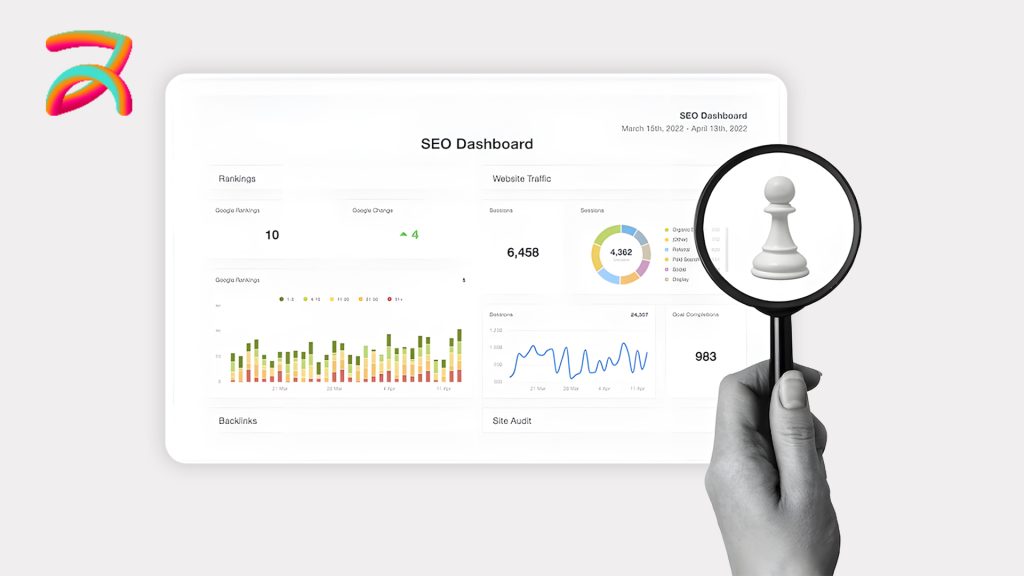
The Local Search Landscape in 2025
Local search has become the primary way people find businesses. Recent studies show that 76% of people who search for something nearby visit a business within 24 hours, and 28% of those searches result in a purchase. More importantly, “near me” searches have grown by over 200% in the past two years.
Mobile devices drive most of this activity, with 82% of local searches happening on smartphones. When someone’s walking down the street looking for lunch, they’re not interested in a corporate chain 20 miles away they want something close, relevant, and trustworthy.
This shift toward hyperlocal search creates perfect conditions for small businesses to thrive. People aren’t just searching for products or services; they’re searching for local solutions with personal touch.
Big Competitors’ Local SEO Weaknesses
Large corporations face inherent challenges in local search that small businesses can exploit. Here’s how the playing field actually favors smaller players:
| Factor | Small Business Advantage | Big Competitor Disadvantage |
| Personal Touch | Direct owner interaction, authentic responses | Corporate scripted responses, no personal connection |
| Local Relevance | Deep community involvement, local partnerships | Generic nationwide approach, disconnected from community |
| Review Response | Quick, personal responses to customer feedback | Slow response times, impersonal customer service |
| Content Authenticity | Real local stories, community events | Corporate marketing content, lacks local flavor |
| Website Flexibility | Quick updates, local optimization | Complex approval processes, one-size-fits-all approach |
| Community Trust | Known faces, established relationships | Faceless corporation, limited local accountability |
Most importantly, the most significant advantage small businesses have is authenticity. Furthermore, when a local restaurant owner personally responds to reviews or a neighborhood mechanic shares genuine advice, it creates trust that no corporate marketing budget can buy.
Consumer Preference for Local Businesses
Recent consumer behavior shows a strong preference for supporting local businesses. Studies indicate that 73% of consumers are willing to pay more for products from companies committed to positive local impact. Additionally, 68% of consumers trust local businesses more than national chains for personalized service.
This trend accelerated significantly after 2020, when communities rallied around local businesses. People developed emotional connections with their neighborhood establishments, and these relationships translate directly into search behavior and purchasing decisions.
📍 Ready to Rank Locally?
Your size is your strength. Let us help you use local SEO to dominate your neighborhood search results and attract ready-to-buy customers nearby.
Start Your Local Growth →Essential Local SEO Foundation Strategies
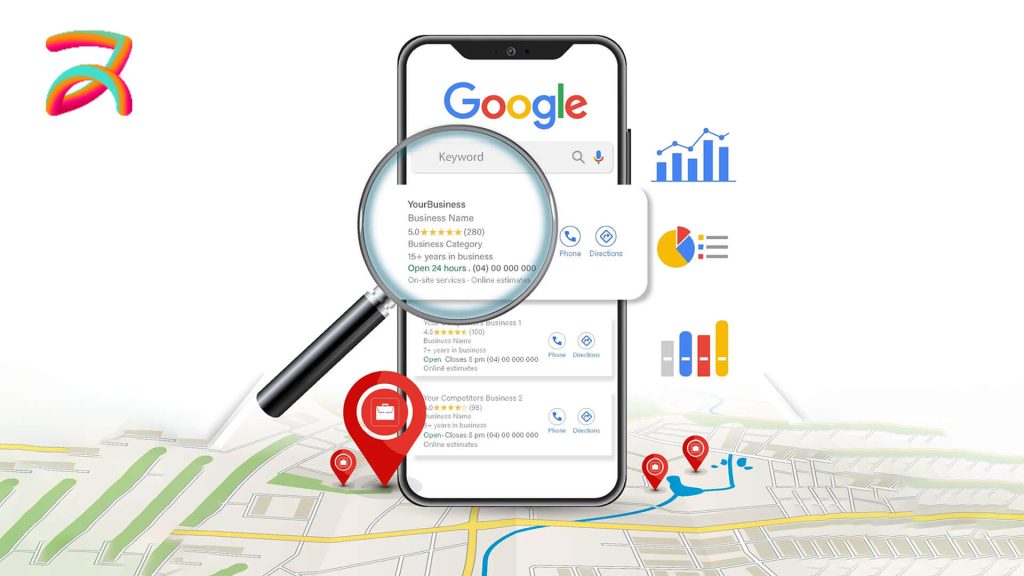
Google My Business Mastery
Your Google My Business profile is your most powerful local SEO tool. It’s often the first thing potential customers see, and it directly influences your rankings in local search results.
Start with complete optimization:
Business Information Accuracy: Ensure your business name, address, and phone number match exactly across all online platforms. Even small inconsistencies can hurt your rankings. If your official business name is “Mike’s Auto Repair,” don’t use “Mike’s Car Service” anywhere else.
Category Selection Strategy: Choose your primary category carefully, it significantly impacts which searches you appear for. A restaurant should select “Restaurant” as primary, not “Bar” or “Café” unless that’s more accurate. You can add secondary categories, but the primary one carries the most weight.
Photo Optimization: Upload high-quality photos regularly. Businesses with photos receive 42% more requests for directions and 35% more click-throughs to their websites. Include photos of your storefront, interior, products, services, and team. Keep them current and authentic.
Regular Posts: Google My Business posts help maintain active engagement. Share updates about new products, special offers, events, or helpful tips. Posts stay visible for seven days, so maintain a consistent schedule.
Review Management: Respond to every review, positive and negative. Thank customers for positive feedback and address concerns professionally. Your response rate and quality affect your overall rating and ranking.
NAP Consistency Across the Web
NAP (Name, Address, Phone number) consistency is fundamental to local SEO success. Search engines use this information to verify your business legitimacy and location.
Step-by-Step NAP Audit:
- Document Your Official Information: Write down your exact business name, complete address, and primary phone number as they appear on your business license or official documents.
- Check Major Platforms: Review your information on Google My Business, Yelp, Facebook, Better Business Bureau, and your website. Look for any variations in formatting, abbreviations, or outdated information.
- Industry-Specific Directories: Find directories specific to your industry (like Angie’s List for contractors or OpenTable for restaurants) and verify your listings.
- Citation Building Priority: Focus on high-authority directories first: Google My Business, Yelp, Facebook, Yellow Pages, and your local Chamber of Commerce. Then move to industry-specific and local directories.
Directory Priority List:
| Priority Level | Directory Type | Examples | Impact on Rankings |
| Critical | Major Platforms | Google, Yelp, Facebook | High – Direct ranking factor |
| High | Local Business | Chamber of Commerce, BBB | Medium – Local authority |
| Medium | Industry-Specific | Angie’s List, TripAdvisor | Medium – Niche relevance |
| Low | General Directories | Yellow Pages, Superpages | Low – Additional signals |
Local Keyword Research That Beats Corporate Giants
Large competitors often target broad, competitive keywords. Small businesses can win by focusing on specific, location-based searches that show clear local intent.
Finding Local Keyword Opportunities:
Start with your core services plus location modifiers. Instead of competing for “plumber” (impossible for most small businesses), target “emergency plumber [your city]” or “24-hour plumbing repair [neighborhood].”
Use tools like Google’s Keyword Planner, but don’t ignore the “People also ask” section and related searches at the bottom of Google results. These often reveal long-tail local opportunities.
Long-Tail Local Keywords: These longer, more specific phrases have less competition and higher conversion rates. Examples:
- “best Italian restaurant downtown [city name]”
- “affordable wedding photographer [city name]”
- “emergency AC repair [neighborhood name]”
Competitor Keyword Gap Analysis: Look at what local competitors rank for that you don’t. Often, you’ll find location-specific terms they’re targeting that you’ve missed.
Advanced Local SEO Tactics to Outrank Big Competitors

Hyperlocal Content Strategy
Creating content that speaks directly to your local community gives you a massive advantage over corporate competitors who rely on generic, nationwide content.
Neighborhood-Specific Landing Pages: If you serve multiple areas, create dedicated pages for each location. A plumbing company might have pages for “Plumbing Services in [Neighborhood A]” and “Plumbing Services in [Neighborhood B],” each with unique, locally-relevant content.
Local Event Coverage: Write about community events, local news, or seasonal activities. A lawn care business might create content about “Preparing Your Garden for [City Name]’s Spring Festival” or “Winter Lawn Care Tips for [Local Climate Zone].”
Community Partnership Content: Showcase your involvement with local organizations, schools, or charities. This content performs well in search results and builds community trust.
Content Calendar for Local Businesses:
| Month | Content Focus | Example Topics |
| January | New Year/Planning | “2025 Home Improvement Projects for [City] Residents” |
| February | Valentine’s/Winter | “Romantic Dinner Spots in [Neighborhood]” |
| March | Spring Preparation | “Spring Cleaning Services in [City Name]” |
| April | Easter/Spring Events | “Easter Brunch Guide for [City] Families” |
Review Generation and Management System
Similarly, reviews are crucial for local search rankings and customer trust. As a result, small businesses can often generate more authentic, detailed reviews than large competitors.
Pros and Cons of Different Review Platforms:
| Platform | Pros | Cons | Best For |
| Google Reviews | Directly impacts local rankings, high visibility | Difficult to remove fake reviews | All local businesses |
| Yelp | Detailed reviews, strong local presence | Algorithm can hide reviews, pay-to-play concerns | Restaurants, personal services |
| Easy for customers, social sharing potential | Less direct SEO impact | Community-focused businesses | |
| Industry-specific | Builds niche authority, qualified leads | Limited reach, may require subscription | Specialized services |
Review Generation Strategy:
Ask for reviews at the moment of peak customer satisfaction right after completing excellent service or when customers express appreciation. Make the process simple by providing direct links to your review profiles.
To achieve this, follow up with email requests, but personalize them. For example, instead of generic “please review us” messages, reference specific services: “We hope you’re enjoying your new kitchen cabinets. If you’re happy with the installation, we’d appreciate a quick review.”
Managing Negative Reviews:
When negative reviews occur, respond quickly and professionally. First, address the specific concern, then offer to resolve the issue, and finally invite further discussion offline. Notably, many potential customers read negative reviews specifically to see how businesses handle problems.
Local Link Building Strategies
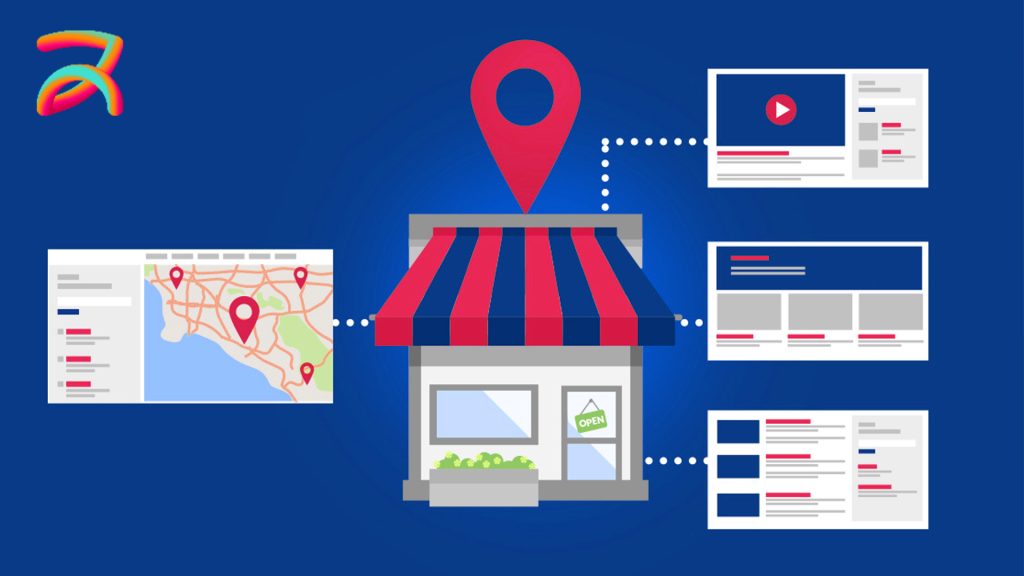
In contrast to generic backlinks, local links from community organizations, local media, and other businesses carry more weight for local search than generic backlinks from unrelated websites.
Chamber of Commerce and Business Associations: Most offer member directories with website links. The cost is usually reasonable, and these links carry significant local authority.
Local Sponsorship Opportunities: Sponsor community events, youth sports teams, or local festivals. These partnerships often include website mentions and links, plus they generate genuine community goodwill.
Community Event Participation: Host or participate in local events. Many generate online coverage from local media, community calendars, and event websites.
Local Business Partnerships: Develop relationships with complementary businesses. A wedding photographer might partner with local florists, venues, and caterers for mutual referrals and links.
Local Media Outreach: Local newspapers, magazines, and blogs often need story ideas. Offer expertise on topics related to your industry, share unique business stories, or comment on local economic trends.
Schema Markup for Local Businesses
Schema markup helps search engines understand your business information and can improve your appearance in search results.
LocalBusiness Schema Implementation:
The most important schema type for local businesses includes your name, address, phone number, business hours, and service areas. This information helps search engines display rich snippets and knowledge panels.
Key Schema Properties to Include:
- Business name and description
- Complete address and phone number
- Business hours and days of operation
- Payment methods accepted
- Service areas or delivery zones
- Social media profiles
FAQ Schema for Local Questions: If you have a FAQ section answering common local questions (“Do you serve [neighborhood name]?” or “What are your emergency service hours?”), mark it up with FAQ schema to potentially appear in featured snippets.
Leveraging Community Connections for SEO Success
Building Local Authority and E-A-T
Moreover, Expertise, Authoritativeness, and Trustworthiness (E-A-T) matter significantly for local businesses. Ultimately, Google wants to rank businesses that communities trust and rely on.
Community Involvement Strategies:
To build this trust, join local business associations, participate in community boards, or volunteer for local causes. While these activities often result in online mentions, more importantly, they establish you as a trusted community member.
Local Media Expert Positioning: Position yourself as the go-to expert for your industry in local media. Offer to comment on relevant stories, provide seasonal tips, or explain industry trends from a local perspective.
Educational Community Content: Host workshops, speak at local events, or create educational content addressing common local concerns. A tax preparer might offer free seminars about local tax law changes, generating both authority and potential business.
Social Media Integration with Local SEO

Although social media doesn’t directly impact search rankings, it nevertheless supports local SEO through increased visibility, engagement, and brand mentions. As we covered in our social media strategy for luxury brands post, local businesses can use similar high-quality content approaches to build their community presence.
Whether you handle social media yourself or work with a social media agency, focus on creating authentic, location-based content that connects with your neighbors and strengthens your local search rankings.
Platform-Specific Local Strategies:
Facebook: Join local community groups and participate helpfully (without being promotional). Share community events, highlight local customers, and engage with other local businesses.
Instagram: Use location tags consistently, share behind-the-scenes content showing your local presence, and feature local customers or community events.
LinkedIn: Connect with other local business owners, share local business insights, and participate in local business group discussions.
Geotagging Best Practices: Always include location information when relevant. Tag your business location, local events you attend, or neighborhoods you serve.
Email Marketing for Local SEO

Email marketing supports local SEO by driving repeat website visits, encouraging reviews, and maintaining customer relationships.
Local Newsletter Strategies: Create content specifically valuable to your local community. Include local event calendars, highlight other local businesses, or share community news alongside your business updates.
Customer Testimonial Collection: Use email campaigns to request testimonials and reviews. Make it easy by including direct links and specific talking points about what made their experience positive.
Event Promotion Integration: Use email to promote your participation in local events, driving both attendance and online engagement around local activities.
Measuring and Monitoring Local SEO Success
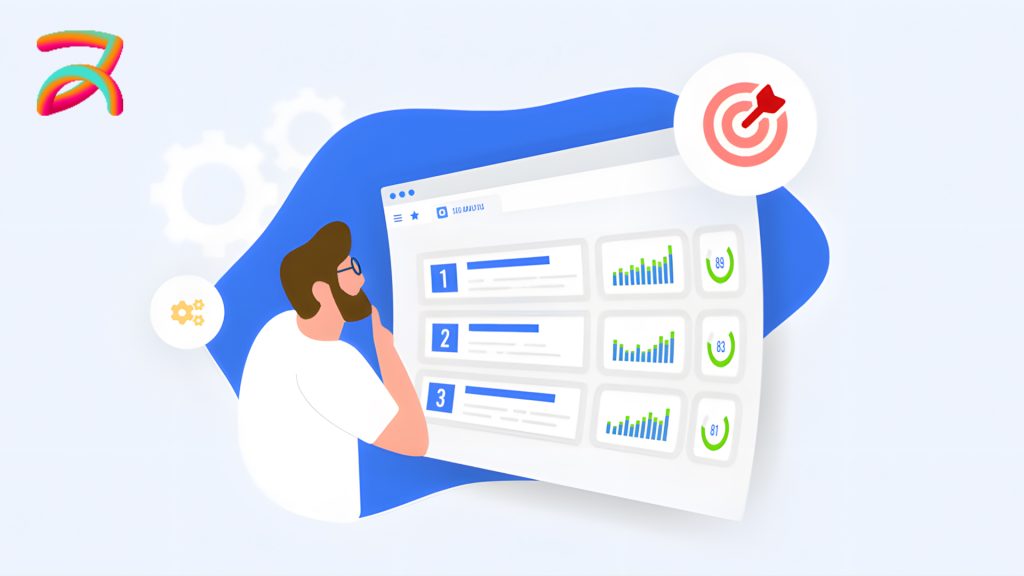
Key Local SEO Metrics to Track
Tracking the right metrics helps you understand what’s working and where to focus your efforts.
Essential Local SEO Dashboard Metrics:
| Metric Category | What to Track | Why It Matters |
| Local Rankings | Position for key local keywords | Direct measure of visibility |
| Google My Business | Views, clicks, calls, direction requests | Engagement and action metrics |
| Website Traffic | Organic local traffic, conversion rate | Business impact measurement |
| Review Metrics | Review count, average rating, response rate | Trust and reputation indicators |
| Citations | Number and consistency of listings | Foundation strength measurement |
Google My Business Insights: Monitor how customers find your listing (direct search vs. discovery), what actions they take (website visits, calls, direction requests), and how your performance compares to similar businesses in your area.
Local Pack Ranking Positions: Track your rankings for primary local keywords from different locations within your service area. Rankings can vary significantly based on the searcher’s location.
Tools for Local SEO Monitoring
Free vs. Paid Tools Comparison:
| Tool Category | Free Options | Paid Options | Best For |
| Rank Tracking | Google Search Console, manual checking | BrightLocal, Whitespark, SEMrush | Automated position monitoring |
| Citation Management | Manual directory searches | Moz Local, Yext | NAP consistency across web |
| Review Monitoring | Google Alerts, manual checking | ReviewTrackers, Grade.us | Reputation management |
| Competitor Analysis | Manual research, Google alerts | SEMrush Local, BrightLocal | Market intelligence gathering |
Google Search Console: This free tool shows which local searches bring people to your website, which pages perform best for local queries, and technical issues that might hurt your local rankings.
Setting Up Google Alerts: Create alerts for your business name, key staff members, and your business name plus common misspellings. This helps you catch new mentions and potential reputation issues early.
ROI Calculation for Local SEO
Understanding your return on investment helps justify continued local SEO efforts and guides budget allocation.
Local SEO ROI Formula: (Revenue from Local SEO – Local SEO Investment) ÷ Local SEO Investment × 100
Tracking Revenue from Local SEO:
- Use Google Analytics to segment organic local traffic
- Track phone calls from local search (use unique phone numbers if possible)
- Monitor in-store visits attributed to online search
- Calculate customer lifetime value, not just initial purchase
Timeline Expectations:
- 0-3 months: Foundation building, initial improvements in Google My Business visibility
- 3-6 months: Improved rankings for low-competition local keywords
- 6-12 months: Significant ranking improvements and increased local traffic
- 12+ months: Established local authority and consistent lead generation
Common Local SEO Mistakes That Help Big Competitors Win
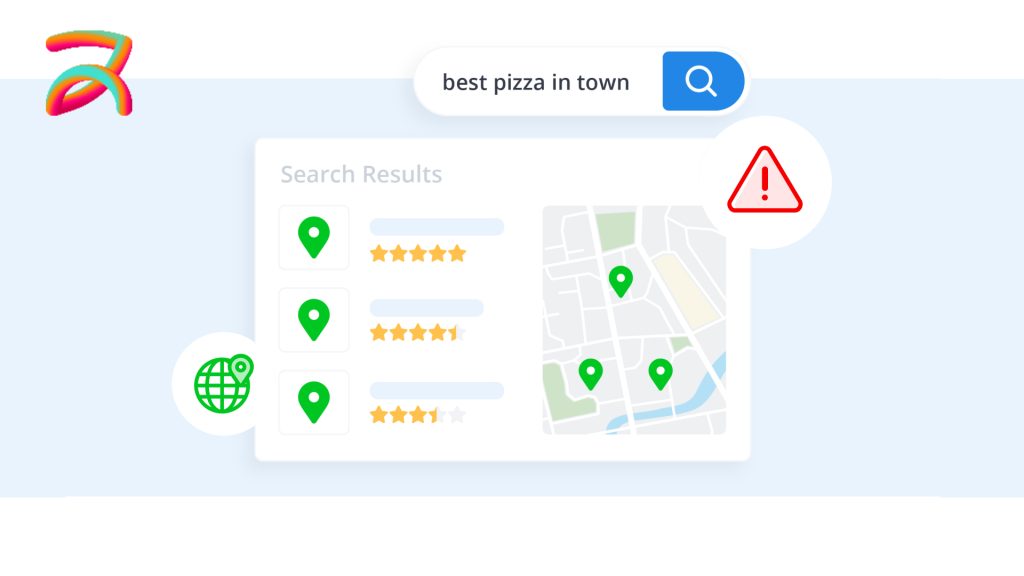
Technical SEO Errors
Surprisingly, many small businesses lose to larger competitors simply because of technical issues that undermine their local SEO efforts.
Mobile Optimization Failures: With most local searches happening on mobile devices, a website that doesn’t work well on smartphones is at a severe disadvantage. Test your website on various devices and ensure fast loading times.
Page Speed Issues: Local searchers are often in a hurry. If your website takes more than three seconds to load, many potential customers will choose a competitor instead.
Broken Local Schema: Incorrectly implemented or outdated schema markup can confuse search engines about your business location and services. Regularly test your schema markup using Google’s tools.
Content and Strategy Mistakes
Generic Content Creation: Using the same content as competitors or creating generic service pages without local relevance wastes opportunities to connect with local customers.
Ignoring Local Keywords: Focusing only on broad industry terms instead of location-specific searches means missing customers actively looking for local solutions.
Inconsistent Business Information: Having different versions of your business name, address, or phone number across different websites confuses search engines and customers.
Missed Opportunities Checklist
- Unclaimed directory listings – Many businesses have listings they don’t know about
- Unoptimized service area pages – Missing opportunities for neighborhood-specific content
- Ignored customer questions – Not addressing common local concerns in content
- Unused Google My Business features – Not taking advantage of posts, Q&A, or messaging
- Missing local partnerships – Not building relationships with complementary businesses
- Unmonitored online mentions – Missing opportunities to engage or correct information
Case Studies: Small Businesses That Beat Big Competitors Through Strategic Local SEO
Case Study 1: Local Restaurant vs. Chain Restaurant

The Challenge
A family-owned Italian restaurant in Springfield competed against three major chain restaurants (Olive Garden, Carrabba’s, and Romano’s Macaroni Grill) for local search visibility and foot traffic.
Initial Keyword Analysis & Position
Target Keywords Performance (Before):
- “Italian restaurant Springfield” – Position 15 (Page 2)
- “Italian food near me” – Not in top 50
- “best Italian restaurant Springfield” – Position 22
- “Italian restaurant delivery Springfield” – Position 18
- “authentic Italian food near me” – Not ranking
- “family Italian restaurant Springfield” – Position 12
Local Pack Visibility: 0% (not appearing in local 3-pack)
Keyword Strategy Implementation
Primary Keyword Targets:
- Italian restaurant + [city name]
- Italian food near me
- Best Italian restaurant + [city name]
- Authentic Italian food near me
- Family Italian restaurant + [city name]
- Italian restaurant delivery/takeout + [city name]
Long-tail “Near Me” Focus:
- Pizza near me
- Pasta restaurant near me
- Italian catering near me
- Romantic dinner near me
- Family restaurant near me
- Gluten-free Italian near me
Strategies Implemented
1. Google My Business Optimization with Keyword Focus:
- Updated business description to include target keywords naturally
- Added 50+ high-quality photos with keyword-rich file names and captions
- Posted weekly specials using local keywords: “Springfield’s best lasagna special”
- Created posts targeting “near me” searches: “Craving authentic Italian near you?”
2. Review Generation Campaign:
- Implemented QR code system with keyword-specific landing pages
- Encouraged customers to mention specific dishes and “near me” context in reviews
- Achieved 89 reviews with keyword-rich content mentioning “best Italian near me”
3. Hyperlocal Content Creation:
- Blog post: “Why Springfield Loves Authentic Italian Food” (targeting city + cuisine keywords)
- Content piece: “Finding Real Italian Food Near Me in Springfield”
- Local supplier stories: “Springfield’s Italian Restaurant Partners with Local Farms”
- Community involvement content: “Your Neighborhood Italian Restaurant Supports Local Schools”
4. “Near Me” Optimization Strategy:
- Created location-specific landing pages for surrounding neighborhoods
- Optimized for mobile searches (85% of “near me” searches are mobile)
- Implemented schema markup for local business and restaurant data
- Added FAQ section addressing “Italian restaurant near me” queries
Results After 8 Months
KeywordBefore PositionAfter PositionImprovement"Italian restaurant Springfield"152+13 positions"Italian food near me"Not ranking1New ranking"Best Italian restaurant Springfield"223+19 positions"Pizza near me"Not ranking4New ranking"Family restaurant near me"Not ranking2New ranking"Italian restaurant delivery Springfield"181+17 positions
Business Metrics:
- Local Pack Ranking: Position #2 (from not visible)
- Google Reviews: 89 reviews (from 12) – 642% increase
- Monthly Website Visits: 1,250 (from 340) – 268% increase
- “Near me” search traffic: 45% of total organic traffic
- Monthly Reservations: 720 (from 450) – 60% increase
📍 Ready to Put Local SEO to Work for You?
Book a free strategy call with Buzzz and let’s build a local SEO game plan that drives traffic, leads, and growth right in your backyard.
Let’s Talk Local SEO →Case Study 2: Independent Retailer vs. Big Box Store
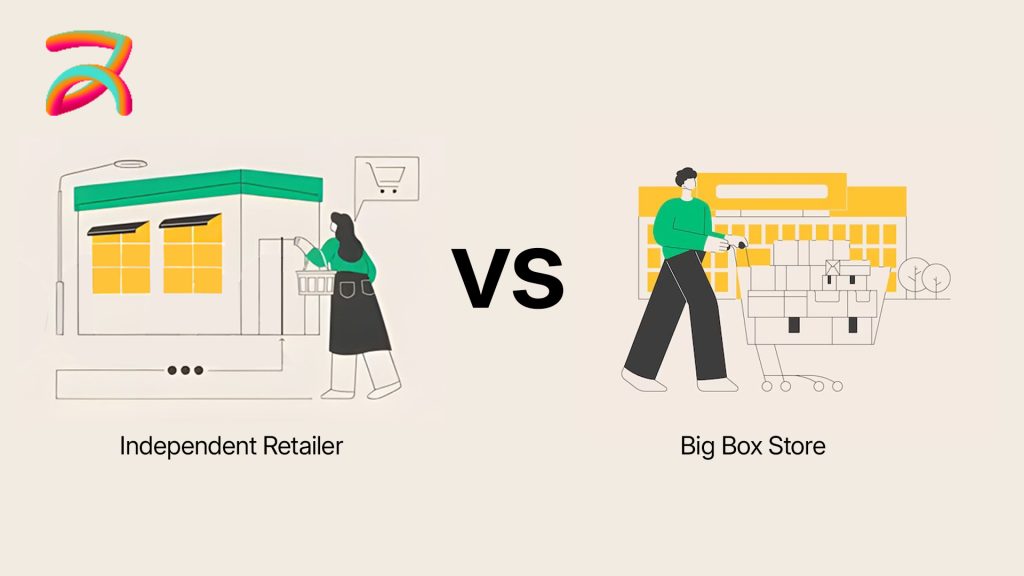
The Challenge
SportZone, a local sporting goods store, competed against Dick’s Sporting Goods after they opened a new 50,000 sq ft location just 2 miles away.
Initial Keyword Landscape
Target Keywords Performance (Before):
- “Sporting goods Riverside” – Position 8
- “Sports store near me” – Position 25
- “Fishing gear near me” – Position 12
- “Hunting supplies Riverside” – Not ranking
- “Baseball equipment near me” – Not ranking
- “Local sports store” – Position 15
Keyword Strategy & Implementation
Primary Keyword Clusters:
- Product + Location: “fishing gear Riverside,” “hunting supplies Riverside”
- “Near Me” Variations: “sports store near me,” “fishing gear near me,” “hunting equipment near me”
- Local Expertise: “best fishing spots Riverside,” “local hunting guide Riverside”
- Youth Sports: “youth baseball equipment near me,” “soccer gear Riverside”
Hyperlocal Content Strategy:
- Weekly Fishing Reports: “Best Fishing This Week Near Riverside” (targeting “fishing near me”)
- Hunting Season Updates: “Riverside County Hunting Season Guide” (local + expertise)
- Youth Sports Content: “Where to Buy Baseball Equipment Near Riverside Schools”
- Local Team Coverage: “Supporting Riverside High School Sports Teams”
Google My Business Maximization:
- Daily posts about inventory using “near me” language: “New fishing gear arrives – perfect for anglers near Riverside”
- Local sports scores and outdoor condition reports
- Photos tagged with location-specific keywords
Timeline & Keyword Progress
Month 1-3: Foundation Building
- Claimed 15+ directory listings with consistent NAP and keyword optimization
- “Sporting goods Riverside” moved from position 8 to position 5
Month 4-6: Content & Authority Building
- “Sports store near me” improved from position 25 to position 8
- “Fishing gear near me” jumped from position 12 to position 4
- New rankings for “hunting supplies near me” at position 9
Month 7-9: Local Pack Domination
- Achieved #1 local pack position for “sporting goods Riverside”
- “Sports store near me” reached position 3
- “Fishing gear near me” secured #1 position
Month 10-12: Market Leadership
- Dominated all primary “near me” searches in sporting goods vertical
- Began ranking for broader terms like “outdoor gear California”
Final Keyword Results
| Keyword Category | Representative Keywords | Average Position | Traffic Share |
| “Near Me” Searches | “sports store near me,” “fishing gear near me” | 2.3 | 35% |
| Local + Product | “sporting goods Riverside,” “hunting supplies Riverside” | 1.8 | 28% |
| Youth Sports | “baseball equipment near me,” “soccer gear Riverside” | 3.1 | 22% |
| Expert Content | “best fishing spots near me,” “hunting guide Riverside” | 2.7 | 15% |
Business Impact:
- 340% increase in “outdoor gear [city name]” search visibility
- 180% increase in website traffic from local searches
- “Near me” searches accounted for 40% of new customer acquisition
- 45% increase in in-store sales attributed to online discovery
Case Study 3: Service Business vs. National Franchise
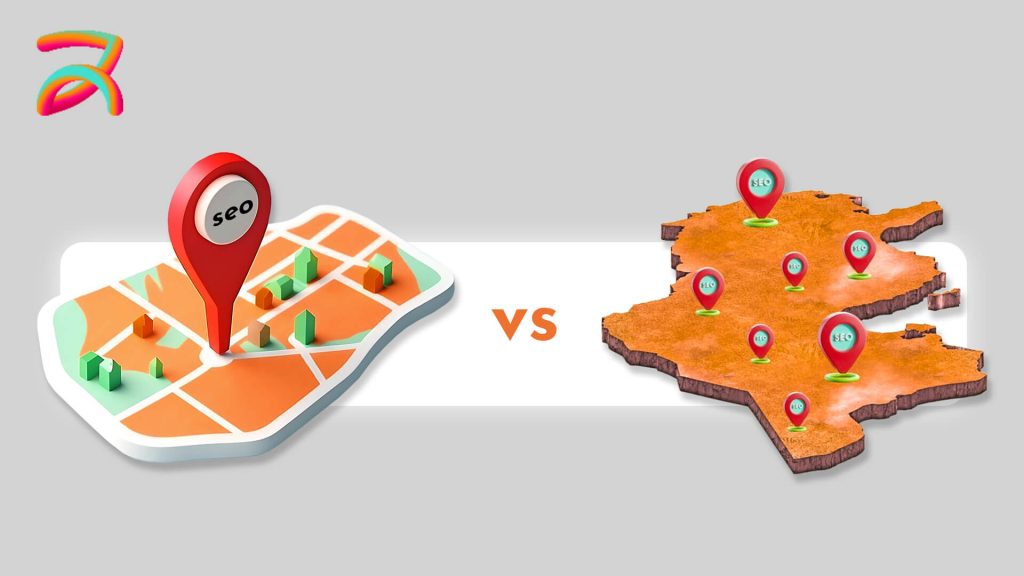
The Business Challenge
Climate Control Solutions, an independent HVAC company, competed against Aire Serv and Benjamin Franklin Plumbing (national franchises) in competitive Oakville market.
Pre-Campaign Keyword Analysis
Emergency Service Keywords (Before):
- “HVAC repair Oakville” – Position 12
- “HVAC near me” – Position 18
- “Emergency HVAC repair near me” – Not ranking
- “24 hour HVAC service Oakville” – Position 15
- “Furnace repair near me” – Not ranking
- “AC repair Oakville” – Position 9
Franchise Competition Analysis:
- Aire Serv: Dominating positions 1-3 for most “HVAC + city” searches
- Benjamin Franklin: Strong in emergency keywords and “near me” searches
- Combined: Controlling 70% of local pack visibility
Strategic Keyword Targeting
High-Intent Emergency Keywords:
- “Emergency HVAC repair near me”
- “24 hour furnace repair Oakville”
- “HVAC service near me now”
- “Same day AC repair near me”
- “Emergency heating repair Oakville”
Neighborhood-Specific Targeting:
- “HVAC repair [specific neighborhood] Oakville”
- “Furnace service near [landmark]”
- “AC repair [subdivision name]”
Educational Long-tail Keywords:
- “Why is my furnace not working Oakville”
- “How to choose HVAC contractor near me”
- “Best HVAC company Oakville reviews”
Implementation Strategy
1. Hyperlocal Landing Pages:
- Created 12 neighborhood-specific pages targeting “HVAC repair near [neighborhood]”
- Each page included local climate data, common HVAC issues for that area’s housing stock
- Embedded Google Maps showing service area and response times
2. Emergency Service Optimization:
- Dedicated landing page for “Emergency HVAC Repair Near Me”
- Implemented click-to-call buttons optimized for mobile “near me” searches
- Added emergency service schema markup
- Created FAQ section addressing urgent repair concerns
3. Authority Content Strategy:
- Monthly blog posts: “Oakville HVAC Maintenance Guide for [Season]”
- Problem-solving content: “Common Furnace Problems in Oakville Homes”
- Local climate focus: “How Oakville Weather Affects Your HVAC System”
4. Community Authority Building:
- Teaching HVAC maintenance classes at Oakville Community College
- Partnering with local home improvement stores for workshops
- Sponsoring local events with keyword-rich promotional materials
Keyword Performance Results
Emergency Keywords (After 18 Months):
| Keyword | Before | After | Improvement |
| “HVAC repair Oakville” | 12 | 1 | +11 positions |
| “HVAC near me” | 18 | 2 | +16 positions |
| “Emergency HVAC repair near me” | No ranking | 1 | New #1 ranking |
| “24 hour HVAC service Oakville” | 15 | 1 | +14 positions |
| “Furnace repair near me” | No ranking | 3 | New top 3 |
| “AC repair near me” | No ranking | 2 | New ranking |
“Near Me” Search Performance:
- 450% increase in organic traffic from “near me” searches
- 65% of new customers found business through “near me” queries
- Average response time to “near me” leads: 18 minutes (vs. 2+ hours for franchises)
Local Pack Domination:
- #1 position in local pack for all primary HVAC keywords
- 85% local pack visibility across service area
- Featured snippet ownership for “best HVAC company near me”
Business Impact Metrics
Search Performance:
- 450% increase in organic traffic over 18 months
- 280% increase in service calls from online sources
- “Near me” traffic converted at 34% (vs. 12% industry average)
Revenue Growth:
- 65% increase in annual revenue
- 92% customer retention rate (vs. 67% industry average)
- Expanded from 2 to 8 employees due to demand
Competitive Achievement:
- Overtook both national franchises in local search visibility
- Became the go-to emergency HVAC service for “near me” searches
- Generated 3x more online reviews than franchise competitors
Key Takeaways for Local SEO Success
1. “Near Me” Search Optimization is Critical
- 46% of all Google searches have local intent
- “Near me” searches grew 150% faster than regular searches
- Mobile optimization essential (78% of “near me” searches happen on mobile)
2. Hyperlocal Keyword Strategy Beats Generic Optimization
- Neighborhood-specific content outperformed city-wide targeting
- Long-tail local keywords had higher conversion rates
- Local expertise content built authority for broader keyword rankings
3. Community Involvement Drives Keyword Authority
- Local partnerships generated natural backlinks with keyword-rich anchor text
- Community events created local media mentions with target keywords
- Teaching/expertise sharing built topical authority for service-related searches
4. Review Strategy Should Target Keywords
- Encourage customers to mention specific services and locations in reviews
- Review responses should naturally include target keywords
- Keyword-rich reviews improve local pack rankings significantly
5. Emergency and High-Intent Keywords Provide Highest ROI
- Emergency service keywords convert at 45% higher rates
- “Near me” + urgent need keywords drive immediate action
- 24/7 service availability messaging crucial for emergency keyword success
Advanced Local SEO Strategies for 2025
Voice Search and Featured Snippet Optimization
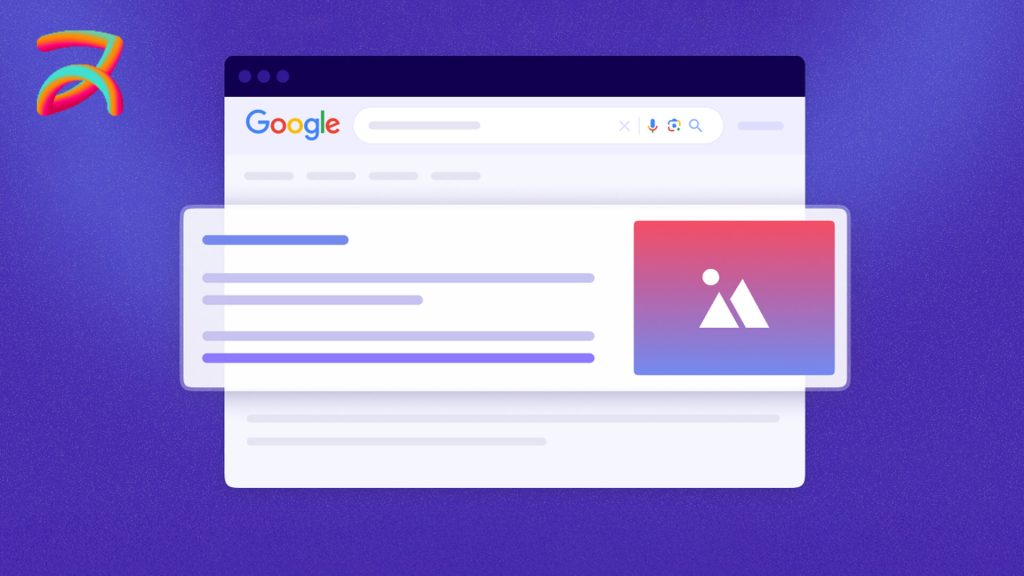
Voice search continues to grow, with many voice queries having local intent. People ask questions like “Where’s the best pizza near me?” or “What time does the pharmacy close?”
Optimizing for Voice Queries:
Instead of basic information, write content that answers questions conversationally. For instance, instead of just listing your hours, include content like “We’re open Monday through Friday from 8 AM to 6 PM, and Saturday mornings from 9 AM to 1 PM for your convenience.”
Featured Snippet Strategies for Local Searches:
Create content that directly answers common local questions. Format answers clearly with numbered steps or bullet points. Questions like “What should I do if my pipes freeze?” or “How do I choose a wedding venue?” often trigger featured snippets.
Smart Speaker Optimization:
Ensure your Google My Business information is complete and accurate, as smart speakers often pull answers from this data for local business queries.
Video SEO for Local Businesses

Video content performs exceptionally well in local search results and helps build trust with potential customers.
Google My Business Video Posts:
Upload short videos showcasing your work, introducing team members, or explaining services. Videos in Google My Business posts get significantly more engagement than photos alone.
YouTube Local Optimization:
Create videos with local keywords in titles and descriptions. A landscaping company might create “Spring Lawn Care Tips for [City Name] Homeowners” or “Before and After: [Neighborhood] Garden Transformation.”
Customer Testimonial Videos:
Video testimonials feel more authentic than written reviews and can be embedded on your website and shared across social media platforms.
Mobile-First Local SEO
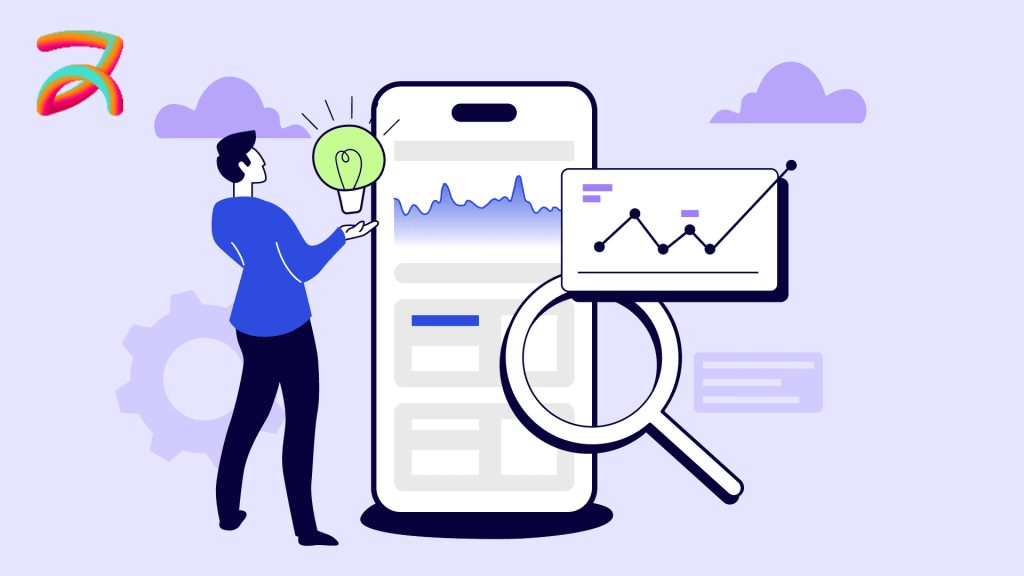
With the majority of local searches happening on mobile devices, mobile optimization is no longer optional.
Mobile User Experience Optimization:
Ensure your website loads quickly on mobile, has easy-to-tap buttons, and displays phone numbers prominently. Many local searchers want to call immediately.
Progressive Web App Benefits:
Consider implementing progressive web app features like offline functionality and home screen installation options. These can improve user experience and potentially boost search rankings.
Location-Based Mobile Features:
Use location data to personalize the mobile experience. Show different content or offers based on the user’s proximity to your business location.
Building Your Local SEO Action Plan
30-Day Quick Start Guide
Week 1: Foundation Setup
- Audit and optimize Google My Business profile
- Verify NAP consistency across major directories
- Install Google Analytics and Search Console
- Document current local keyword rankings
Week 2: Content and Reviews
- Create or update location-specific website pages
- Implement review generation system
- Begin regular Google My Business posting schedule
- Research local keyword opportunities
Week 3: Citations and Links
- Submit to major local directories
- Join Chamber of Commerce or relevant business associations
- Reach out to local media for potential coverage opportunities
- Audit competitor backlink profiles for opportunities
Week 4: Optimization and Monitoring
- Implement local schema markup
- Set up local ranking monitoring
- Create content calendar for ongoing local content
- Plan community involvement activities
Long-term Local SEO Strategy
6-Month Milestones:
- Establish consistent local pack visibility for primary keywords
- Build review base to 50+ Google reviews
- Create comprehensive location-specific content
- Develop local business partnerships and link sources
12-Month Goals:
- Achieve top 3 local pack rankings for main service keywords
- Establish thought leadership through content and community involvement
- Build sustainable systems for ongoing review generation and content creation
- Expand into additional service areas or related keywords
Scaling Successful Tactics: Once you identify what works in your market, systematically expand those approaches. If community event sponsorship generates good results, sponsor more events. If neighborhood-specific content performs well, create content for additional areas.
When to Consider Professional Help
DIY vs. Agency Decision Matrix:
| Consider DIY When | Consider Professional Help When |
| Limited budget (<$1,000/month) | Budget allows for $1,500+ monthly investment |
| Simple, single-location business | Multiple locations or complex service areas |
| Comfortable with technology | Limited time or technical knowledge |
| Gradual growth is acceptable | Rapid results needed for competitive reasons |
Red Flags Indicating Need for Expert Help:
- Declining local search rankings despite your efforts
- Competitors consistently outranking you in local pack
- Technical website issues you can’t resolve
- Negative reviews or reputation management challenges
- Expansion into new markets or service areas
ROI Thresholds for Investment: Generally, if local SEO can generate 3-5x return on investment within 12 months, professional help is worthwhile. For most small businesses, this means generating $3,000-5,000 in additional monthly revenue for every $1,000 invested in local SEO services.
📍 Struggling to get found by nearby customers?
Let Buzzz Local SEO experts help you rank higher in your area and drive real foot traffic to your business.
Book Your Free Call →Conclusion
Small businesses have incredible opportunities to outrank large competitors in local search but only if they understand and leverage their unique advantages. While big corporations struggle with authenticity and local relevance, conversely small businesses can build genuine community connections that translate directly into search visibility and customer trust.
The strategies outlined here aren’t just theoretical concepts. They’re proven approaches that work when implemented consistently and authentically. The key is remembering that local SEO success comes from genuinely serving your community, not just optimizing for search engines.
Start with the foundation elements: optimize your Google My Business profile, ensure NAP consistency, and begin creating locally relevant content. Build from there by developing community relationships, generating authentic reviews, and establishing yourself as a local authority in your field.
Remember that local SEO is a marathon, not a sprint. The businesses that achieve lasting success are those that commit to ongoing, consistent effort while maintaining focus on serving their local customers exceptionally well.
Your community needs local businesses that understand their unique needs and challenges. By implementing these local SEO strategies, you’re not just improving your search rankings you’re building a stronger, more connected local business that serves your community better.
The tools and strategies are available. The opportunity is real. The question is: are you ready to claim your place as the local leader in your industry?
Frequently Asked Questions
Small businesses compete with big companies in local search by leveraging three key advantages: personal customer relationships, hyperlocal community involvement, and agile content creation. Unlike large corporations, small businesses can respond quickly to Google My Business reviews, create neighborhood-specific content, and build authentic local citations through Chamber of Commerce memberships and community partnerships. The key is focusing on proximity search optimization and “near me” keywords where geographic targeting gives small businesses a natural advantage over generic corporate presence.
The most effective local SEO strategies for small businesses are:
Google My Business optimization with consistent NAP (Name, Address, Phone) data
Hyperlocal content creation targeting neighborhood-specific keywords
Local citation building across relevant directories and Better Business Bureau listings
Review generation systems for authentic customer testimonials
Schema markup implementation using LocalBusiness structured data
Community-focused SEO through local event participation and sponsorships
These strategies work because they align with local intent keywords and proximity search algorithms that favor businesses with strong community connections.
Small businesses rank higher than big competitors locally because Google’s local pack algorithm prioritizes relevance, proximity, and prominence within specific geographic areas. Small businesses excel in:
Local relevance: Direct community involvement creates natural local citations
Geographic proximity: Physical closeness to search queries beats corporate locations
Authentic engagement: Personal responses to Google My Business reviews build trust signals
Neighborhood marketing: Hyperlocal optimization targets location-based keywords more effectively than generic corporate SEO strategies
Google Maps and local search results favor businesses that demonstrate genuine local market presence over enterprise-level competitors with distant headquarters.
Small businesses typically see initial local search improvements within 30-90 days, with significant competitive gains occurring at 6-12 months. Timeline breakdown:
Month 1-3: Google My Business optimization and NAP consistency show first results
Month 4-6: Local citation building and review generation create ranking momentum
Month 7-12: Hyperlocal content strategy and community-focused SEO establish market dominance
12+ months: Sustained local pack rankings and near me search dominance
Success depends on consistent implementation of neighborhood SEO tactics and maintaining active community engagement. Businesses focusing on proximity search optimization see faster results than those using generic approaches.
Yes, small businesses can and regularly do outrank national chains in local search results. This happens because Google’s local pack algorithm weighs local intent keywords and geographic targeting more heavily than domain authority for location-based searches. Key success factors include:
Hyperlocal optimization: Targeting “near me” searches and neighborhood-specific keywords
Community-focused SEO: Local citations from Chamber of Commerce and community partnerships
Authentic local presence: Real customer relationships reflected in Google My Business reviews
Agile content creation: Quick response to local events and seasonal trends
National chains struggle with generic corporate presence and templated responses, giving small businesses a competitive advantage in proximity search results.
Small businesses should allocate 3-7% of revenue to local SEO, typically $500-2,500 monthly for comprehensive local search optimization. Budget breakdown:
DIY Approach: $100-500/month (tools: Google Search Console, local citation services)
Hybrid Strategy: $800-1,500/month (professional Google My Business management + in-house content)
Full-Service: $1,500-2,500/month (complete local SEO with neighborhood marketing)
ROI expectations: Well-executed local SEO generates $3-5 return per $1 invested within 12 months. Businesses in competitive markets may need higher investment for hyperlocal optimization and community-focused SEO strategies.
Essential local SEO tools for small businesses include:
Free Tools:
Google My Business: Primary local search optimization platform
Google Search Console: Track local intent keywords and geographic targeting performance
Google Analytics: Monitor proximity search traffic and near me search conversions
Bing Places: Secondary local pack optimization
Paid Tools ($50-200/month):
BrightLocal or Whitespark: Local citation building and NAP consistency monitoring
Moz Local or Yext: Directory management and local listings optimization
SEMrush Local: Competitor analysis and location-based keyword research
Start with free tools for Google My Business optimization, then invest in paid solutions as your neighborhood SEO tactics show ROI.
Google My Business optimization is the most critical local SEO factor, accounting for approximately 25% of local pack ranking factors. Key components include:
Complete NAP consistency across all online directories
Regular posting schedule with community-focused content
Active review management with personal responses to customer feedback
High-quality photos showcasing local community involvement
Accurate business categories and service area definitions
This foundation enables effective hyperlocal optimization and supports all other neighborhood marketing strategies. Without proper Google My Business setup, other local citation building and proximity search efforts have limited impact.
Optimize for “near me” searches by implementing these mobile-first local SEO strategies:
Mobile page speed optimization: 3-second load times for proximity search success
Location-based keyword integration: Natural inclusion of neighborhood names and local landmarks
Google My Business posts: Regular updates using “near me” language patterns
LocalBusiness schema markup: Structured data for enhanced local search visibility
Hyperlocal content creation: Blog posts addressing community-specific needs and events
“Near me” searches represent 76% of mobile local searches, making mobile optimization essential for capturing local intent keywords and geographic targeting opportunities.
Local citations are online mentions of your business NAP (Name, Address, Phone) information that build trust signals for local search algorithms. They matter because:
Consistency signals: Matching NAP data across directories improves Google Maps rankings
Authority building: Citations from Chamber of Commerce and Better Business Bureau increase prominence
Local relevance: Industry-specific directories boost neighborhood SEO performance
Discovery channels: Citations create additional pathways for proximity search traffic
Quality citations from relevant local directories have 3x more impact than generic business listings. Focus on community-focused citations rather than quantity-based citation building strategies.
Create hyperlocal content by focusing on neighborhood-specific topics and location-based keywords:
Content Strategy:
Local event coverage: “Best [City] Farmers Market Guide” targeting community searches
Neighborhood guides: “[Specific Area] Restaurant Guide” for geographic targeting
Local problem-solving: “Winter Storm Preparation for [City] Residents”
Community partnerships: Features on local businesses and collaborations
Optimization Tactics:
Include neighborhood names naturally in titles and headers
Use local landmarks and ZIP codes in content
Add location-specific FAQ sections
Implement LocalBusiness schema markup for enhanced visibility
This approach captures long-tail local intent keywords and builds authority for proximity search results.
Generate Google reviews through systematic review management processes:
Direct Request Methods:
Post-service follow-up: Email templates with direct Google My Business review links
In-person requests: QR codes linking to review pages at point of sale
Receipt integration: Review requests printed on customer receipts
Incentivization Strategies:
Service improvements: Address negative feedback to encourage positive reviews
Thank you campaigns: Personal responses to all reviews build review momentum
Community recognition: Feature customer stories with permission
Best Practices:
Request reviews within 24-48 hours of service completion
Make the process mobile-friendly for immediate responses
Respond to all reviews within 24 hours to show active engagement
Consistent review generation increases local pack rankings and builds trust for near me search conversions.
Measure local SEO success using these key performance indicators:
Primary Metrics:
Local pack rankings: Position in Google Maps results for target keywords
Google My Business insights: Views, clicks, and direction requests
Organic traffic from local searches: Geographic targeting performance in Google Analytics
Near me search visibility: Rankings for location-based and proximity search terms
Business Impact Metrics:
Phone calls from local searches: Direct conversion tracking
Store visits attributed to online discovery: Foot traffic correlation
Local customer acquisition cost: ROI of community-focused SEO investment
Review generation rate: Monthly review velocity and sentiment trends
Tracking Tools:
Google Search Console for local intent keyword performance
Google Analytics for geographic targeting and user behavior
Google My Business dashboard for local engagement metrics
Monitor these metrics monthly and adjust hyperlocal optimization strategies based on performance trends.




